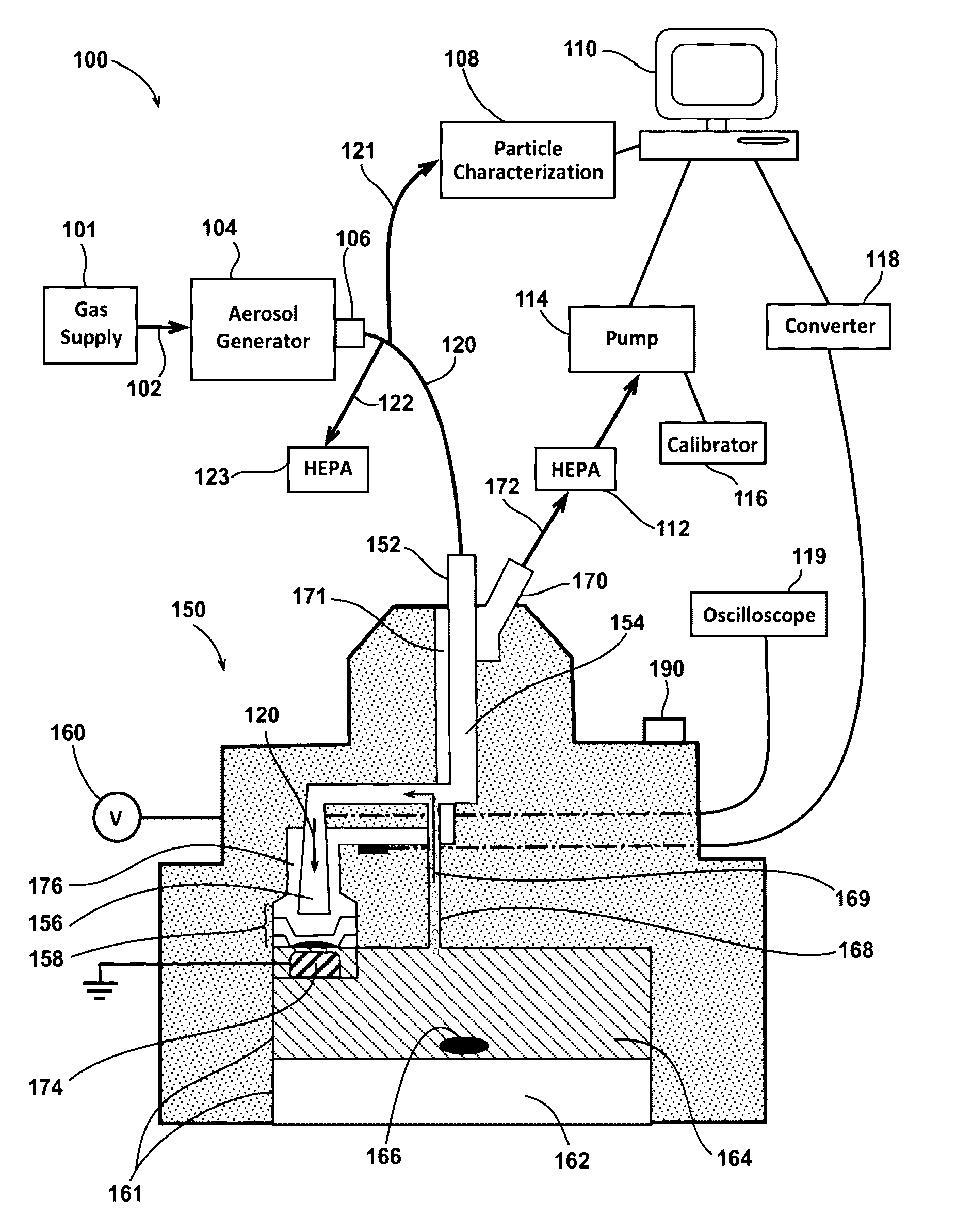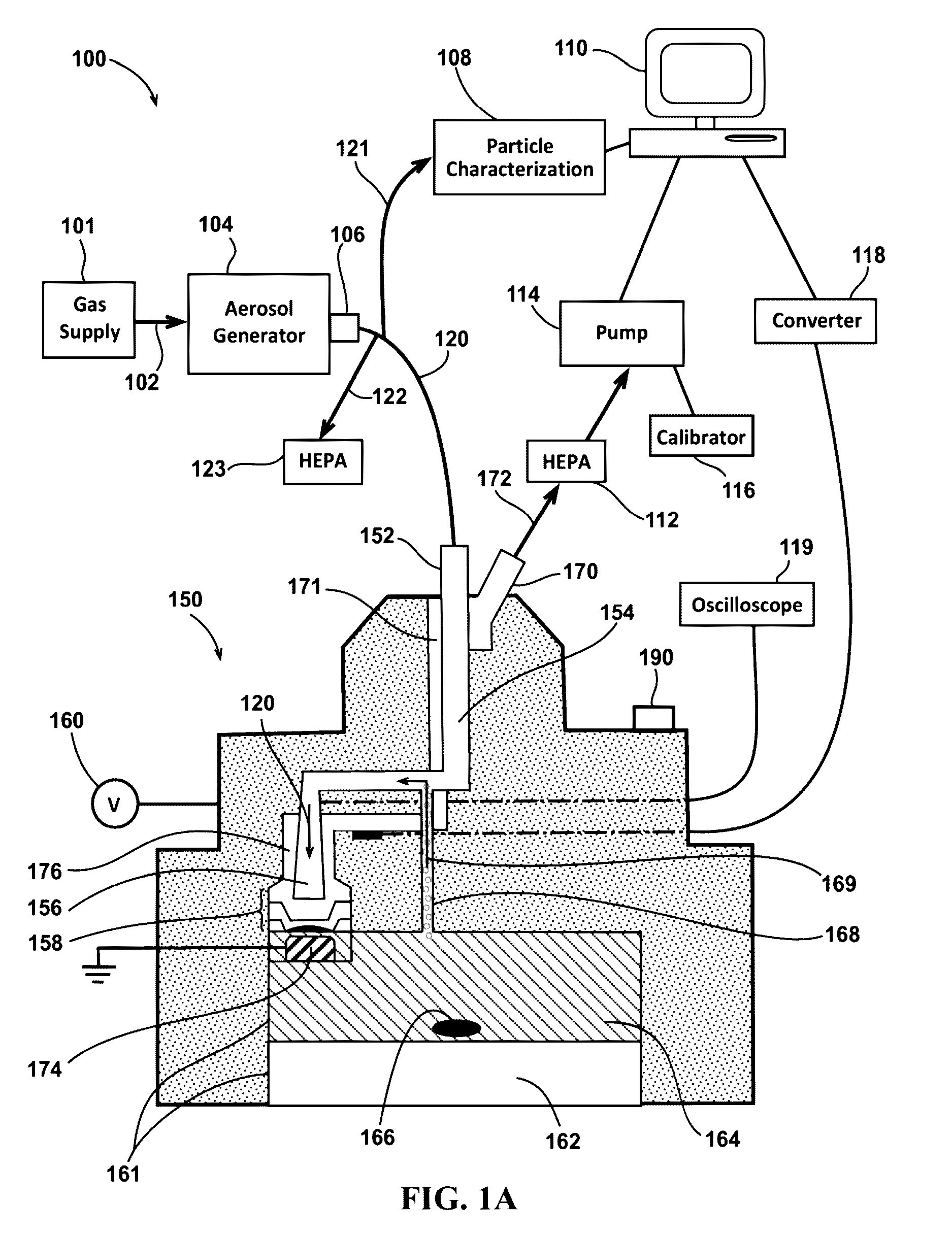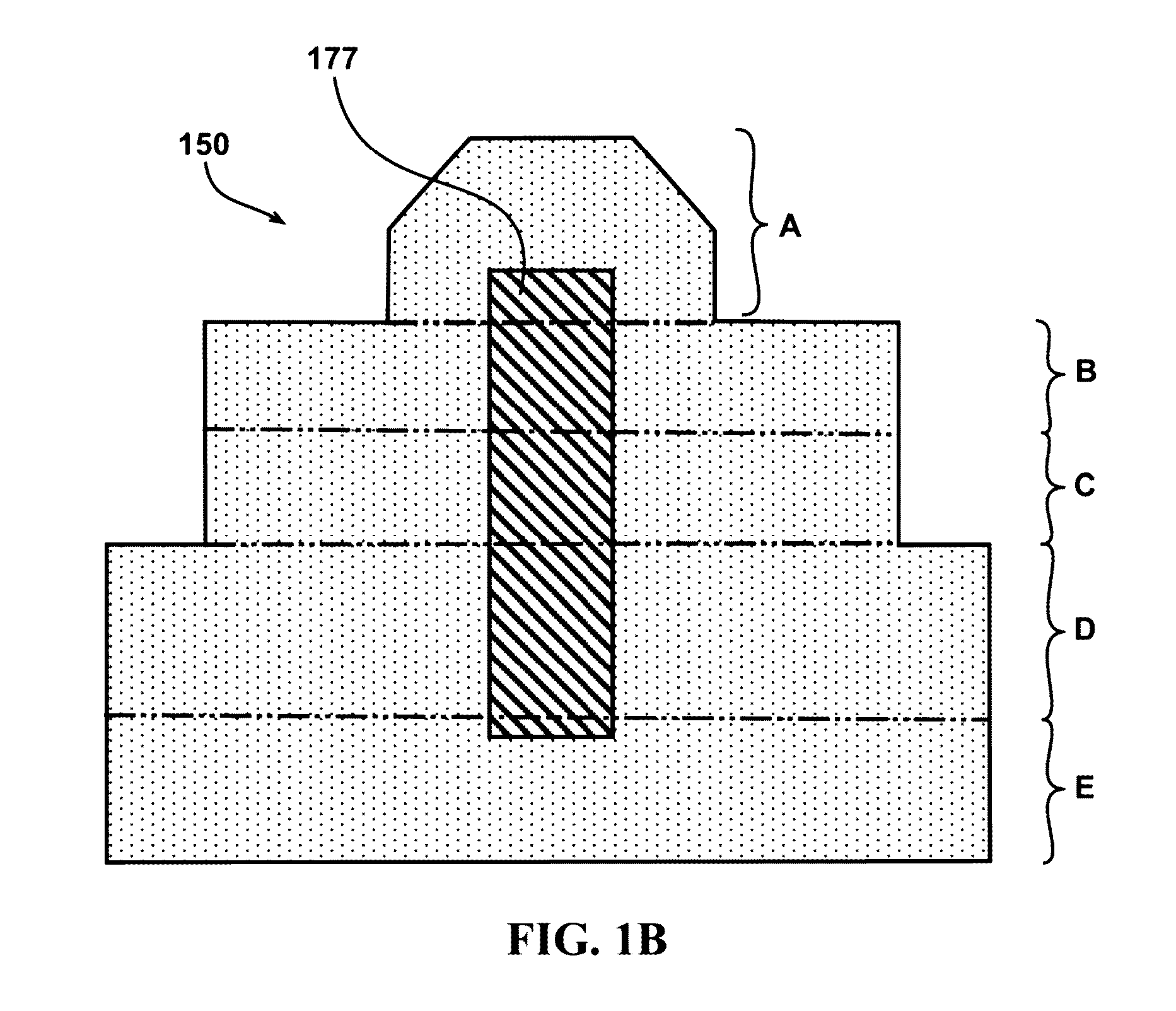Portable in vitro multi-well chamber for exposing airborne nanomaterials at the air-liquid interface using electrostatic deposition
a nanomaterial and air-liquid interface technology, applied in the field of nanoparticle deposition on biological materials, can solve the problems of unintended hazardous consequences, inducing local inflammation and oxidative stress, and nms toxicological effects on biological systems, and achieve the effect of facilitating the entry of humidity
- Summary
- Abstract
- Description
- Claims
- Application Information
AI Technical Summary
Benefits of technology
Problems solved by technology
Method used
Image
Examples
example 1
Simulation of Gas Flow, Electrostatics, and Particle Deposition
[0065]Using an embodiment of the nanoparticle exposure system similar to that depicted in FIG. 5, simulations of the flow field, electrical field, and particle trajectories in a single nanoparticle exposure chamber were conducted using COMSOL Multiphysics® software (Comsol® Inc.). In the simulated chamber, the conical inlet tube discharge had a cross-sectional area of 0.1772 cm2. The steady-state computational fluid dynamics module was used to establish the flow in the chamber. The normal inlet flow velocity was set so that the discharge velocity was equivalent to 0.0047 m / s, calculated based on the flow rate used for deposition experiments (5 mL / min) and cross-sectional area of the conical inlet tube discharge. The steady-state electrostatics module was used to establish the electric field in the chamber. The electric potential was applied at the conical inlet tube discharge and ground to the media well. When the wire m...
example 2
Deposition of Nanoparticles in an Eight-Chamber Assembly
[0067]Several experiments were conducted using silver nanoparticles to observe particle deposition in the chambers of an eight-chamber nanoparticle exposure chamber assembly with chambers similar to the embodiment depicted in FIG. 5. The humidity and temperature were monitored in each chamber using a Sensirion Model SHT75 sensor that was mounted near the cell layer in the aerosol discharge path. The air temperature was maintained at 27.18±0.05° C. and relative humidity at 68.68±1.42%. Silver nanoparticles coated with polyaromatic pyrolized hydrocarbons (25 nm, Novacentrix®) were aerosolized from a powder using the Vilnius Aerosol Generator (CH Technologies, Inc.). A scanning mobility particle sizer (NanoScan, TSI®) was used to measure the number size distribution and total number concentration over time. The mass size distribution was calculated for each size bin using Eq. (1), assuming spherical particle morphology and diamete...
example 3
Deposition of Nanoparticles on Type II Pneumocytes
[0069]Human type II pneumocytes (A549, ATCC) were grown in the nanoparticle exposure chamber assembly with chambers similar to the embodiment depicted in FIG. 5. The cells were grown at 37° C. and 100% humidity. The cell culture media was replaced using a syringe inserted into the silicone sleeves on the outside of each chamber. No change in flow rate was observed after insertion of the syringe into the silicone sleeves. The cells were examined using the live cell alamarBlue® assay (Invitrogen®), which was completed according to the manufacturer's instructions.
[0070]As shown in FIG. 7, there was no difference in terms of the number of viable cells between the cells grown in a standard incubator (Incubator Control) as compared to cells in the chamber that were exposed to 1 hour, 5 kV / cm field strength with 40 mL / min flow (Chamber Control). A concentration dependent decrease in cell viability was observed for exposure to silver (Ag) na...
PUM
 Login to View More
Login to View More Abstract
Description
Claims
Application Information
 Login to View More
Login to View More - R&D
- Intellectual Property
- Life Sciences
- Materials
- Tech Scout
- Unparalleled Data Quality
- Higher Quality Content
- 60% Fewer Hallucinations
Browse by: Latest US Patents, China's latest patents, Technical Efficacy Thesaurus, Application Domain, Technology Topic, Popular Technical Reports.
© 2025 PatSnap. All rights reserved.Legal|Privacy policy|Modern Slavery Act Transparency Statement|Sitemap|About US| Contact US: help@patsnap.com



